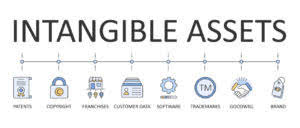
Shareholder equity is not directly related to a company’s market capitalization. The latter is based on the current price of a stock, while paid-in capital is the sum of the equity that has been purchased at any price. Compiling a balance sheet report can be time consuming and complicated, so automated accounting software like Bokio can be a simple solution.
Balance Sheets Are Subject to Several Professional Judgment Areas That Could Impact the Report
You will need to tally up all your assets of the company on the balance sheet as of that date. The first step is to total the balances on both sides of an account, i.e., the debit and credit sides. This article covers various points under this topic, like bank balance check, trial balance, balancing of accounts, and more.
What Does Credit and Debit Mean?

An example of this scenario is the replacement of one asset for another asset. The accounting equation should balance if the accounting entries are correctly recorded. Transactions that replace one asset, liability, or equity for another do not cause any change in the resources available to a business, which is why they don’t affect the accounting equation. To understand this, we can think of the accounting equation as a pair of buckets that store information about the assets and funds of the business.

T-Accounts with Single Entries
The reconciliation spreadsheet should be carried forward from month to month for each yearly accounting period. Fixed assets should be rolled forward by ensuring that purchases, sales, retirements and disposals, and accumulated depreciation are correctly recorded. In financial records, like balancing in accounting the general ledger and trial balance, fixed assets have a debit balance, and accumulated depreciation has a credit balance to offset fixed assets. Accounts receivable details may not match the general ledger if customer invoices and credits are accrued and not entered individually into the aged accounts receivable journal. Customer account write-offs must be recorded against the Allowance for Doubtful Accounts, which nets against Accounts Receivable in financial statements.

Apple’s total liabilities increased, total equity decreased, and the combination of the two reconcile to the company’s total assets. Companies initially record their business transactions in bookkeeping accounts within the general ledger. Depending on the kinds of business transactions that have occurred, accounts in the ledgers could have been debited or credited during a given accounting period before they are used in a trial balance worksheet.
- It shows the exact amount of balances all ledger accounts made for all accounting transactions that have taken place throughout the financial or accounting year.
- So, we have our opening balance (debit) of $4,300 and our closing balance (debit) of $19,100.
- Barbara has an MBA from The University of Texas and an active CPA license.
- Assets of a business cannot decrease when there is an increase in equity.
- Credit cards and debit cards are both commonly used forms of electronic payment cards used as an alternative to cash.
- In financial records, like the general ledger and trial balance, fixed assets have a debit balance, and accumulated depreciation has a credit balance to offset fixed assets.
- A deposit is typically made, the depositor is given access to the money, and the check clears before the paying bank is charged.
Income statements are one of three standard financial https://www.facebook.com/BooksTimeInc/ statements issued by businesses. In the above account, the left side represents transactions that decrease the accounts payable balance. Overall, the difference between both sides represents the account balance of $200,000 in the accounts payable ledger.
- The former, also known as the balance sheet, contains a list of account balances that companies accumulate over the years.
- However, it shows the difference between debit and credit transactions in a general ledger in accounting.
- Such uniformity guarantees that there are no unequal debits and credits that have been incorrectly entered during the double entry recording process.
- For instance, accounts receivable should be continually assessed for impairment and adjusted to reveal potential uncollectible accounts.
- Use our free T Account Template to practice the process of balancing off accounts.
- Based on the rules of debit and credit (debit means left, credit means right), we can determine that Assets (on the left of the equation, the debit side) have a Normal Debit Balance.
- Overall, the difference between both sides represents the account balance of $200,000 in the accounts payable ledger.

Please refer to the Payment & Financial Aid page for further information. Before going any further, take out a piece of paper and try construct the loan T-account using the journal entries above. https://www.bookstime.com/ Balancing T-accounts is one of the more complicated and frustrating things for many accounting students.


